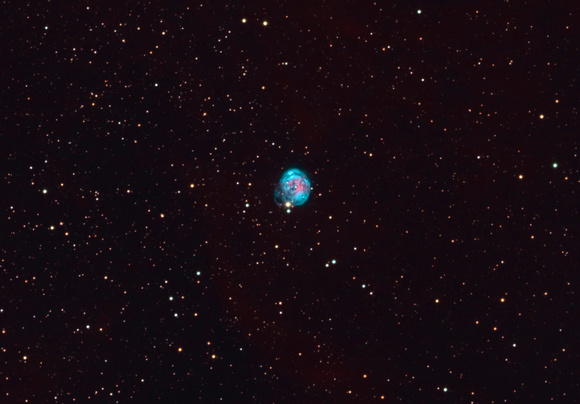NGC7008 Planetary Nebula in Narrowband HO (with RGB stars)
Planetary Nebula (NGC7008) in RGB (Cygnus) - June6,7,8 2023
Planewave CDK12.5 - ASI6200MM
A-P 1100 AE GTO, Antlia Pro BB and 3nm NB filters
R,G,B: (15, 15, 15 x 150s exposures, Bin 1x1, Gain 100)
H,O: (35,29 x 600s exposures, Bin 1x1, Gain 100)
Narrowband Integration Time = 10.7
Total Integration Time = 12.5 hours
My initial goal with this target was to capture it in narrowband, both for its own sake and to provide me with some practice for a more ambitious project). It is interesting to compare the result with that achieved with the only broadband RGB filters and less than 20% of the total integration time.
First off, the stars in this image are dimmer and than the RGB version. The stars from the Ha filter were used, which I often do to help keep the stars from obscuring the nebulosity. As a result, some stars are actually missing in this image, most notably some tiny stars that are right on top of the nebula (PN) itself.
The wavelength selectivity and increased exposure time with the narrowband filters did enhance the ability to draw out both more (the dimmer parts of the PN) and the details of the overlapping "shells" of material surrounding the dwarf star. I think the HO rendition may be technically superior (reveals more information) about the PN, but the RGB rendition does look more like its namesake "Fetus", and retains an more mysterious aura.
I am fairly pleased with the false colouring technique used on the nebula, and it almost mimics that of RGB. Note the star colour in both version used RGB colour information, though.
Which one's better? I think it depends on the intended utility.


